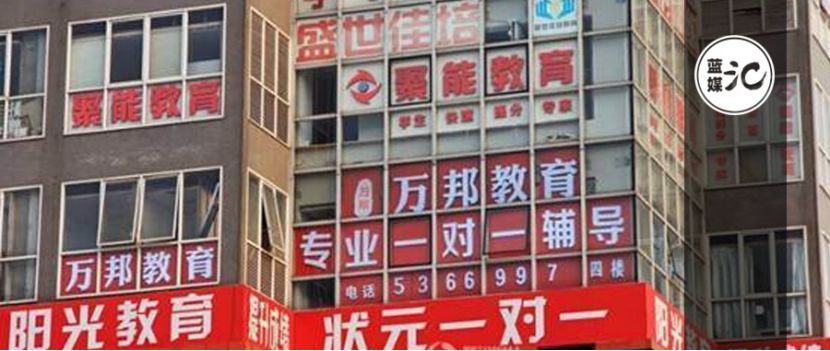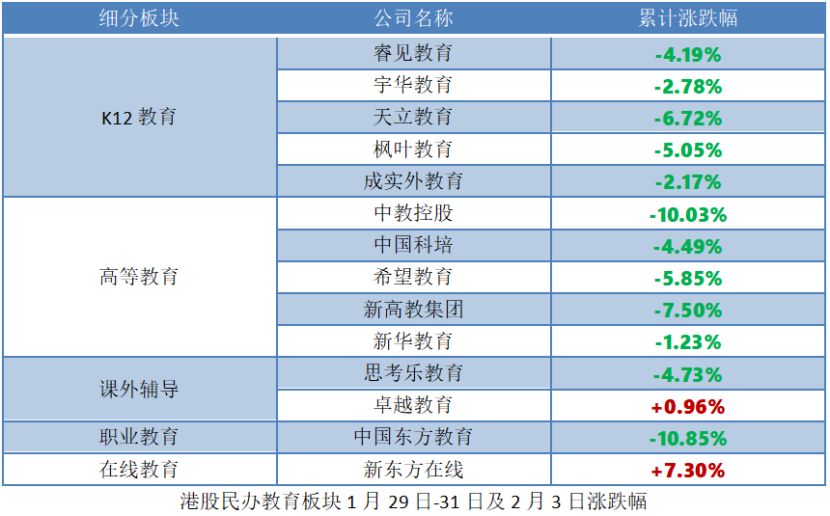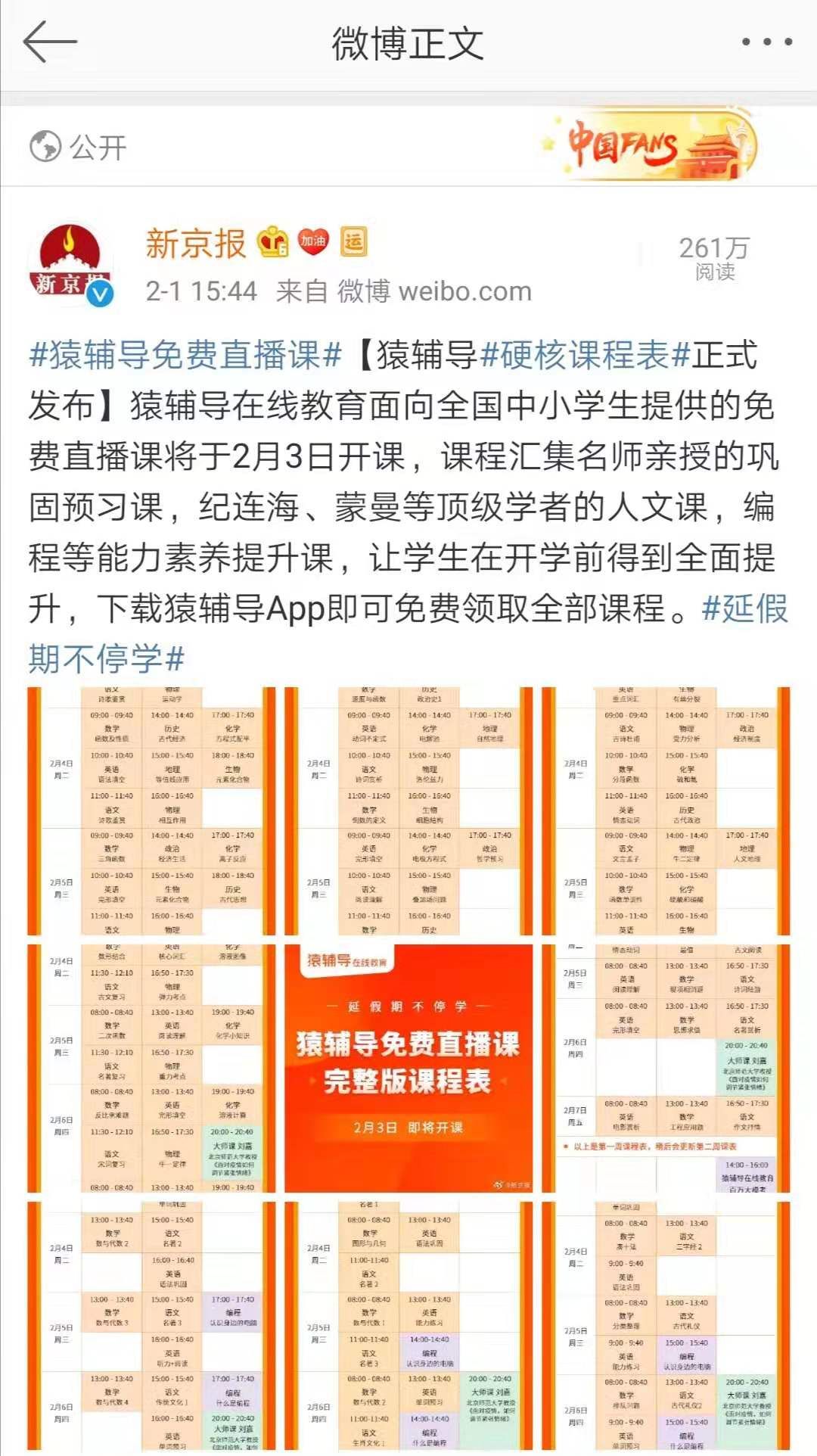Survival requires courage and effort.
Editor’s note: This article comes from the WeChat public account “AI Blue Media Exchange “ (ID: lanmeih001), author | Black Sheep, Mapping 丨 Liu Qi, Editing 丨 Gupan .

” What epidemic is being fought by offline educational institutions? Self-help is hard to say! “An education industry practitioner sent such an emotion when faced with an interview.
Under the epidemic, the picture presented by small and medium-sized educational institutions is absurd.
Some teachers are unable to return to the classroom, and some institution founders are trying to renew their lives by live broadcast. More institutions have been waiting-waiting for the notice of the Education Commission, waiting for funds to come in, waiting for the market to recover, waiting for death.
“What epidemic is being fought by offline educational institutions? Self-help is hard to say!” An education industry practitioner sent such an emotion when faced with an interview.
It is said that ClassIn, an online education service platform, has nearly 3,000 institutions registered in its back office in New Year’s Eve alone. The person in charge of this agency told the media: “If our registration process is not very complicated, there will be tens of thousands of registrations a day.”
This is the online escape of small and medium-sized educational institutions.
According to industry insiders, institutions that are not online can persist for up to two months. Factors that “kill” these institutions include rent, labor costs, student refunds, loss of student resources, and delays in scheduled courses due to delayed start of school. Teacher resigns …
While large-scale educational institutions are fully on the battlefield, some also pull small and medium-sized institutions by the way to shuffle the entire market together. Many people think this is a great opportunity for online education? Insiders said: I just want to survive.
01
For no reason, at the airport, Xu Chun was told that the flight to Guangzhou had stopped. It was February 2nd. He originally wanted to fly to Guangzhou and take a bus back to Shenzhen at the airport. Now he can only return to his home and stay at his home in Beijing.
At the moment of completing the refund procedure, Xu Chun settled down instead.
Schools are closed nowHis job as a “part-time teacher” in Shenzhen may also be neglected. A bit helpless, but he felt that all these things were fixed.
A few years ago, Xu Chun signed a work contract with an education institution in Shenzhen. Originally, he would go to work on February 7th. Even though this job as a TOEFL English teacher is part-time, Xu Chun cherishes it. In Shenzhen, this kind of job opportunity is highly competitive and rare. After entering this institution, he went through three interviews and spoke English throughout.
Part-time teachers in private education institutions account for a large proportion of graduate students or doctoral students. They have WeChat groups to exchange information on work. Among the rapid epidemic changes during the Spring Festival holiday, the speeches in the group ranged from Chinese New Year, to encourage each other, and now some people say: I can’t go back to Shenzhen for the time being, and quit.
The news of the seniors’ “doing nothing” keeps pouring out of the group, both sad and helpless. It is precisely because of the epidemic that many part-time teachers have chosen to resign, or have been dismissed by institutions, leaving novices like Xu Chun in dilemma. He feels that if everything is a human disaster, there is still room to deal with it.
“But it’s a natural disaster now,” he said.
The agency where Xu Chun works, he described as “reliable in messy schools in Shenzhen.” He had 150 yuan per lesson, and the seniors in the group told him to have a good relationship with the class schedule teacher, because then “there is no problem in earning more than six or seven thousand a month.”
Until now, the epidemic will be split between Xu Chun in Beijing and Shenzhen. At first he was also worried about losing the job, but then he simply had a sense of destiny. “Anyway, I have nothing for a poor student, except for the money for the ticket, so leave him alone.”
He decided to live up. In the past, on the sixth day of the new year, he would choose to leave Beijing in advance because he could not stand his parents’ “no work”. Now, in order to avoid being criticized, he started to prepare lessons at home- As a result, he has not been fired by the Shenzhen school ; Also, he always feels that “everything is just a matter of time, and there is a play.”
But the epidemic will obviously reduce his salary, he asserted: “the schedule rate of part-time teachers will definitely decrease, and there are still full-time teachers.”
Actually, Xu Chun’s judgment is correct. On the seventh day of the new year on January 31, Shenzhen’s educational institutions called him and said three points: Class hours are unchanged; Schools are difficult; The class was changed from face-to-face to remote network.
This result surprised Xu Chunxi and reassured his parents. First, the child will not “do nothing all day”, and secondly, work is decently safe. As for the “network remote one-to-one teaching” that sounds great, the school’s plan is: WeChat open video.
Xu Chun feels that under special circumstances, no matter how special the school takes to ensure that the students and teachers are worthwhileGot it. Because “after all, to survive, you need to kill a blood path.”
For the entire small and medium-sized offline education institutions, this industry has reached a scale of 520.5 billion in 2019. In the face of a growth rate of 11.2%, when the epidemic came, passive emergency braking began.
Xu Chun, who was standing after this storm, did not participate in the real resistance and fight. In Shenzhen, nearly one hundred professors such as TOEFL, IELTS, GRE and other small and medium-sized educational institutions are being tested. < strong> It is not only the epidemic that may destroy them now, but also online education institutions with a growth rate of 48.4%, reaching 44.3 billion.
The hunted offline educational institution has a dilemma.
02
The owners of small and medium-sized educational institutions in the vortex are actually more anxious than Xu Chuns.
The number of outbreaks continues to climb, disrupting almost all existing timelines. Starting from January 24, off-campus training institutions across the country have announced that the offline training courses for the winter vacation have been suspended.
For small and medium-sized educational institutions, suspension of classes, such as the atomic bomb, first hit expensive renting and employment costs, then radiated the recruitment of students, and eventually broke the book funds.
Along with this, those courses that have been arranged in advance, the lecture time of teachers and the renting of classroom space have all changed from being determined to being overwhelming.
Xu Fang is the founder of a Chinese educational institution, a staunch and lucky man at the center of this storm.
In 2010, with the idea of educating people and most of the ideas of making money, Xu Fang, a former Go coach, entered the training industry. At that time, the bottom merchants who invested in the family at the time were “lived up” as classrooms, and most of the teachers were used as classrooms. It was part-time-which became a lucky part of his fight against the epidemic-with almost no cost.
This is also the characteristics of the Chinese academy. The courses of calligraphy, Chinese painting, Go, and the four books and five classics are hardly used by full-time teachers. Xu Fang concluded that after studying the parents ’psychology, the Chinese study class is mainly for children to develop rules and expand thinking.
What he is most worried about is that the entire industry will be frustrated, because institutions such as the Chinese academy rely on the trend, and Xu Fang feels that if the epidemic hits the industry too much, it will be difficult to repair once the tide ebbs.

He firmly believes that if there are no classes in March, private small and medium-sized educational institutions will have to die. The reason isSo quickly, rents, teachers ‘expenses, employees’ five insurance and one payment, taxes, and student refunds …
“Anything can be fatal,” Xu Fang said.
But for Xu Fang ’s institution, this year ’s “Winter Holiday Chinese Studies Training Class” has ended before the outbreak. The new enrollment has not yet begun. He has 30 students. The training class is 2,000 yuan each. But he is more worried about the future. “This may be the last income.”
To fight the epidemic, the local Municipal Education Commission brought together the heads of private education institutions like Xu Fang and established a WeChat group. A few days ago, Xu Fang found that there was one organization member missing from the group, and I found out that the organization had convened a meeting of parents to give lectures in order to save themselves, and the Board of Education directly revoked the organization’s license after knowing it.
Now, Xu Fang is at home, researching various online live broadcast platforms. He plans to move Go lessons online and try to recruit students through live broadcasts. Xu Fang said that he wants to be a go net.
Compared with Xu Fang’s Chinese education, last year’s sudden rise in children’s programming education was not so lucky.
Yu Jian, owner of a small robot programming agency, these days his main business is to fight with the mall where the classroom is located.
All his problems can be summed up in one word: money.
The mall cannot be opened due to the epidemic. Directly, Yu Jian’s classroom was closed. What he cares about is What about rents during the closed period? However, this question has not been answered by the mall.
Another serious issue is the salary of his staff. Because of the professionalism of programming education, he hired 3 full-time teachers to teach the course. But before the Spring Festival, all three teachers returned to their hometowns. They planned to return to the city after the festival, but now they have become extravagant because of the epidemic.
For Yu Jian, the teacher ’s salary is a loss and he can quit if he does n’t, but he ca n’t bear it because the programming teacher is too hard to find. Once the market is liberalized, Yu Jian is worried about his Institution may fail to start.
On the other hand, the epidemic made him miss this year’s “National Youth Robot Programming Contest.” Originally, he wanted to publicize his educational institution after obtaining the ranking by this competition. However, after this opportunity was postponed indefinitely, Yu Jian could only think of another way in terms of publicity strategy.
Before March arrived, Yu Jian, while communicating with the mall for rent, tried his best to stabilize the teacher and maintain his book capital. He felt that the start of the year was bad for him, but he also said, “I’m pretty good. The institutions of the industry can’t hold on now. “
03
On January 27, after the Ministry of Education issued a “Notice of Suspension”, to February 2nd, 22 online course platforms and more than 24,000 free courses came in the face. On February 17, the national network cloud classroom will be opened, covering elementary to high school courses. In addition to the network on-demand, TV has also become a teaching platform. in publicWhen many small and medium-sized educational institutions were caught in the bitter cold, large-scale educational institutions started online education a few years ago and found a favorable position in the beginning of this year’s epidemic.
Although in that year, there seemed to be a lot of risks in the education transition line, For example, Xu Fang still thinks that “parents’ deep-rooted impression of the education model is face-to-face.”
But the continuous growth of online education over the past few years is still obvious. According to the statistics of the “China Online Education Industry Market Prospect and Investment Strategic Planning Analysis Report”, the size of China’s online education market may reach 272.7 billion yuan in 2019, and it is predicted that the scale of China’s online education market will reach 315 billion yuan in 2020.
Although the epidemic has affected the overall economy, online education in the capital market has shown a very active side during the first trading day of the Year of the Rat, while non-online education has shown fatigue in the day.
For example, in the Hong Kong stock market, Most of the stock prices of companies in the field of non-online education fell. From January 29 to February 3, the stock prices of most companies fell by more than 5%. On (January 29), New Oriental Online rose sharply , with a daily increase of 7.10%, and a cumulative increase of 7.3% from January 29 to February 3, during which the stock price once hit a record high.

A-share market, February On the 4th, the second day after the opening of the Year of the Mouse, there were up to 20 daily limit of online education concept stocks, including Chinese Online, Gao Le shares, HKUST Xunfei and Zhonggong Education.
“In terms of losses, this online education has a relatively small loss in the industry.” An online education platform practitioner analyzed the AI blue media pool.
Facing the outbreak, large online education institutions have responded extremely quickly. An institution specializing in online education was prepared as early as the epidemic began to spread. After stabilizing the students, it also used the company’s internal platform and technology to attract a wave of small and medium-sized educational institutions that were on the verge of closing doors.
DJI (pseudonym) is a practitioner of this institution. When the Board of Education announced the suspension at the end of January, they discussed the meeting and finally decided to come up with their own internal shooting platform. The technical department took four days to modify it. , As a one-to-many online education platform for small and medium-sized educational institutions.
In addition, traditional educational institutions such as New Oriental, because of their losses during the SARS epidemic in 2003, did not dare to neglect to set up online early.
It started at the end of JanuaryTo enable countermeasures, Zhu Zhaowei, the director of its user operation center, said in an interview with the media that “OMO (online-offline integration) itself is the mainstream trend this year. Under the current circumstances, some online courses are launched, using live or recorded Broadcasting, using the online training camp model, to urge children to complete their learning progress is also feasible. “
More online education institutions have adopted a “free” model to attract attention. According to the “Securities Times” report: Xueersi Online School and Xueda Education have announced that they will provide free online live lessons to elementary and middle school students across the country. Netease Youdao Excellent Courses provide middle school students in Hubei Province with all-level winter vacation system courses of corresponding grades …

In contrast, < strong> Small and medium-sized educational institutions that are unable to survive online have basically become victims of the delay of the epidemic.
Actually, at the end of 2019, offline education institutions have been rumored that their bosses are “running”. There are their own business problems here, but more are the impact of online education. Afterwards, during the spring class season of the “Golden Three Silvers Nine” often mentioned in the education industry, the epidemic broke out. It was originally the best season for offline education institutions to obtain students, but now it is full of blemishes.
“(Offline education institutions) This industry will generate a large number of unemployed in the future, and institutions will be closed.” DJI said.
But he also feels that the outbreak will lead the entire education industry to face more opportunities. “This opportunity is not just online, and soon we can see which education programs are just needed. Now many educational institutions rely on words. Many parents are attracted by the so-called words. Such a platform will definitely explode. Good offline education institutions will show up. “
But now, the top priority for offline education for middle and small schools is not how to transform online or how to prove themselves-this is the idea of online educators who broke through the world in the epidemic. And the idea of more small and medium-sized offline education practitioners like Yu Jian is simple: give me money and spend this winter vacation.